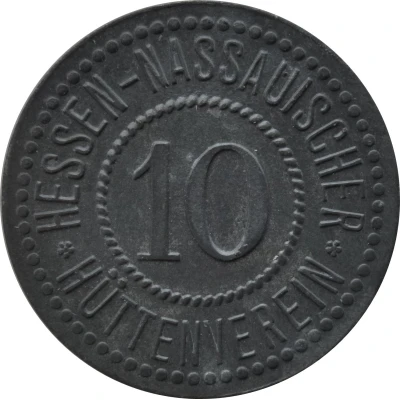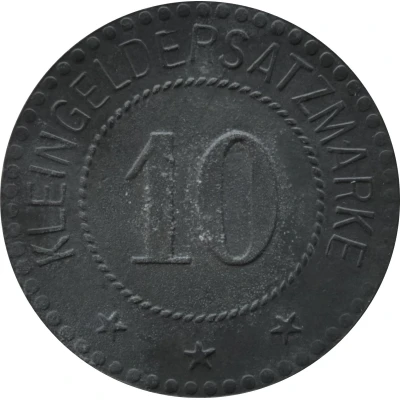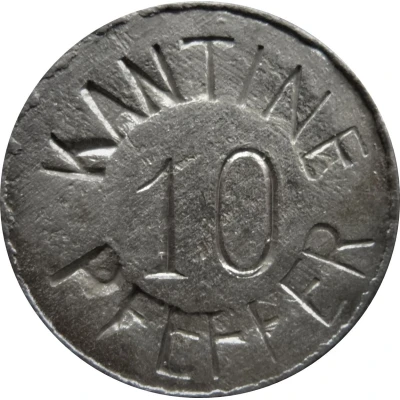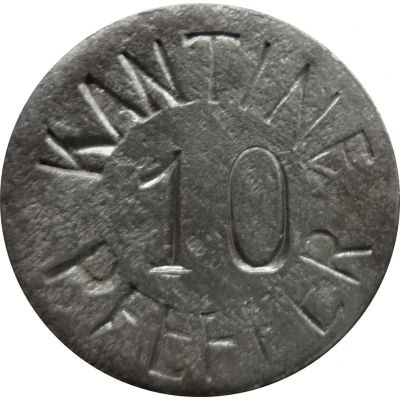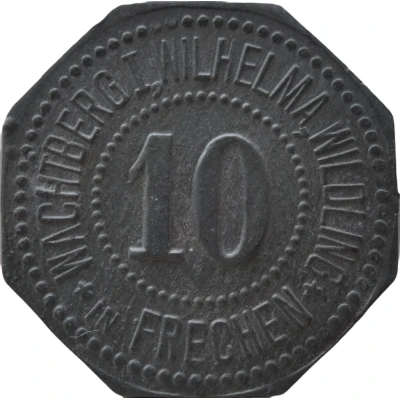
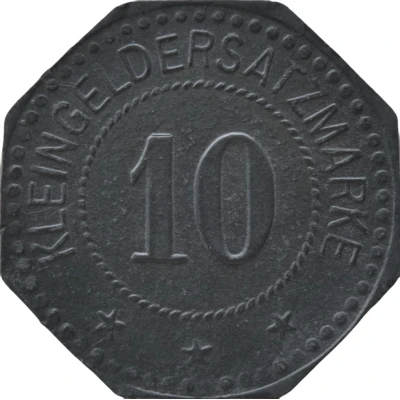

© Willem63 (CC BY-NC-SA)
10 Pfennigs - Frechen (Wachtberg I, Wilhelma, Windling) ND
| Zinc | 2.0 g | 20.8 mm |
| Issuer | German notgeld (Germany) |
|---|---|
| Type | Standard circulation coin |
| Value | 10 Pfennigs (10 Pfennige) (0.10) |
| Currency | Mark (1914-1924) |
| Composition | Zinc |
| Weight | 2.0 g |
| Diameter | 20.8 mm |
| Thickness | 1.0 mm |
| Shape | Octagonal (8-sided) |
| Technique | Milled |
| Orientation | Medal alignment ↑↑ |
| Demonetized | Yes |
| Updated | 2024-10-04 |
| Numista | N#321935 |
|---|---|
| Rarity index | 95% |
Reverse
Pearl rim, legend surrounding rope circle with denomination centered
Script: Latin
Lettering:
KLEINGELDERSATZMARKE
10
★ ★ ★
Edge
Plain
Comment
Menzel: BBBFa: Braunkohlenindustrie
Interesting fact
The 10 Pfennigs - Frechen coin was issued during a time of economic crisis in Germany, specifically during the hyperinflation period of the 1920s. The coin was part of a series of emergency currency issued by local authorities, known as "notgeld," which translates to "emergency money" in English. The coin's design features a windmill, a church, and a castle, which are landmarks in the town of Frechen. The coin's zinc composition was a common material used for coins during this time period due to its low cost and durability. Despite its low value, the coin is now a sought-after collector's item among numismatists, and its historical significance serves as a reminder of Germany's economic struggles in the early 20th century.
